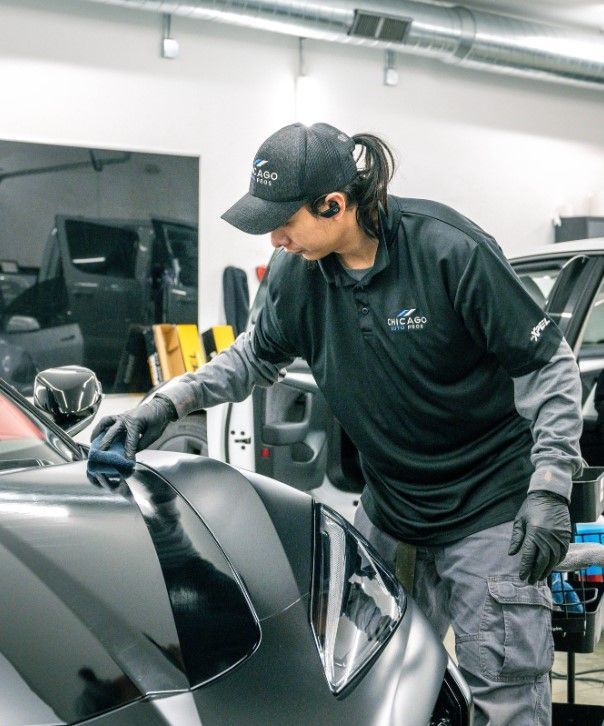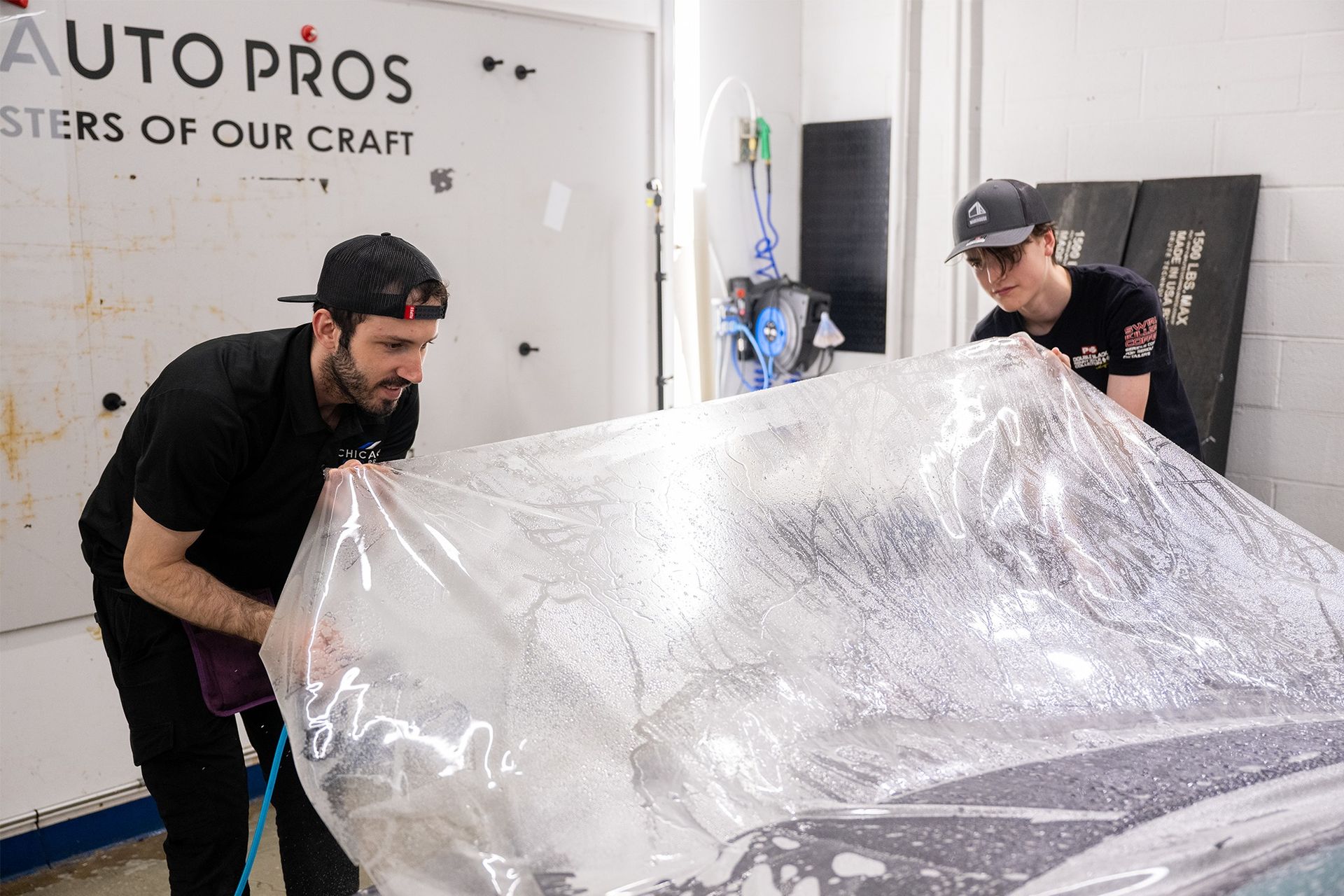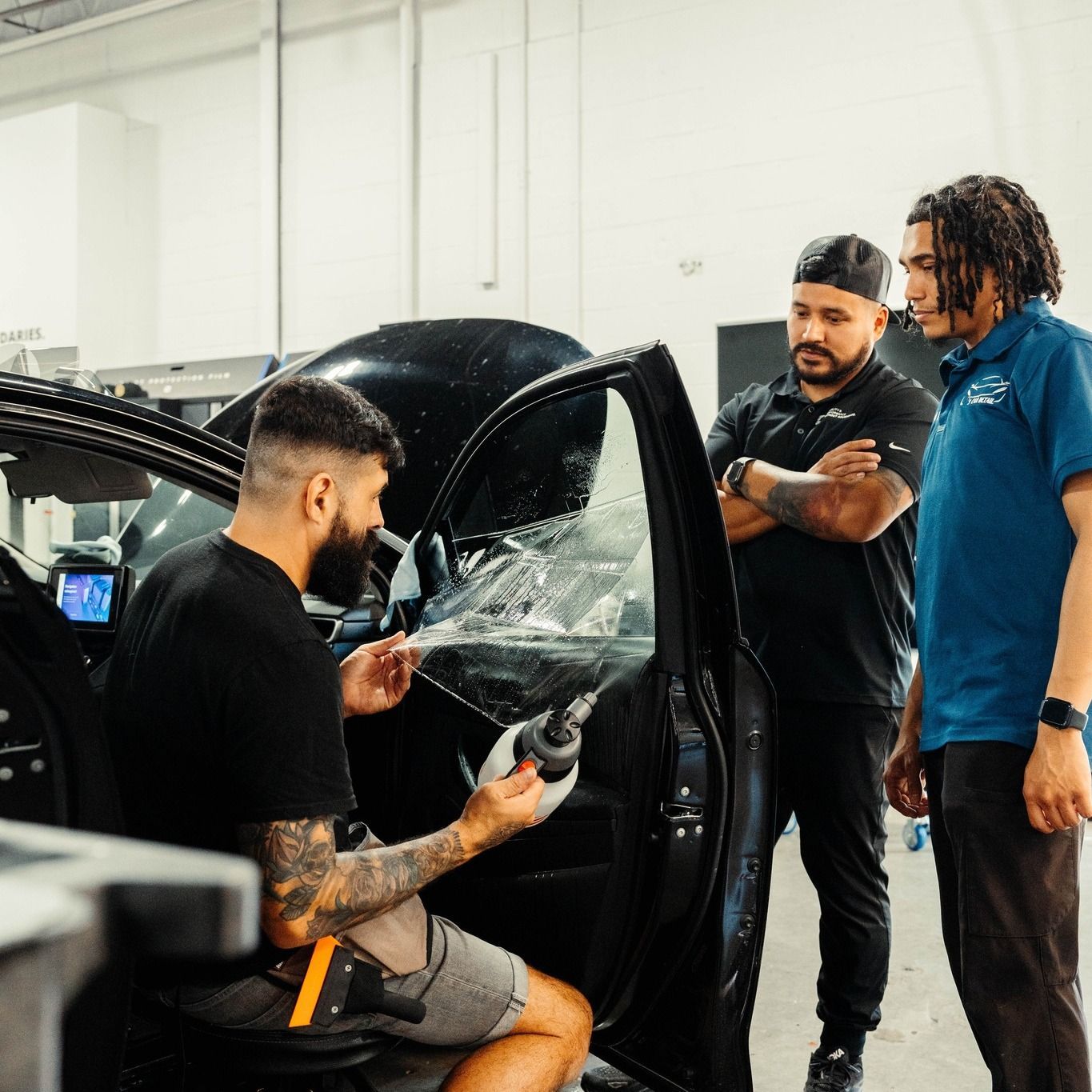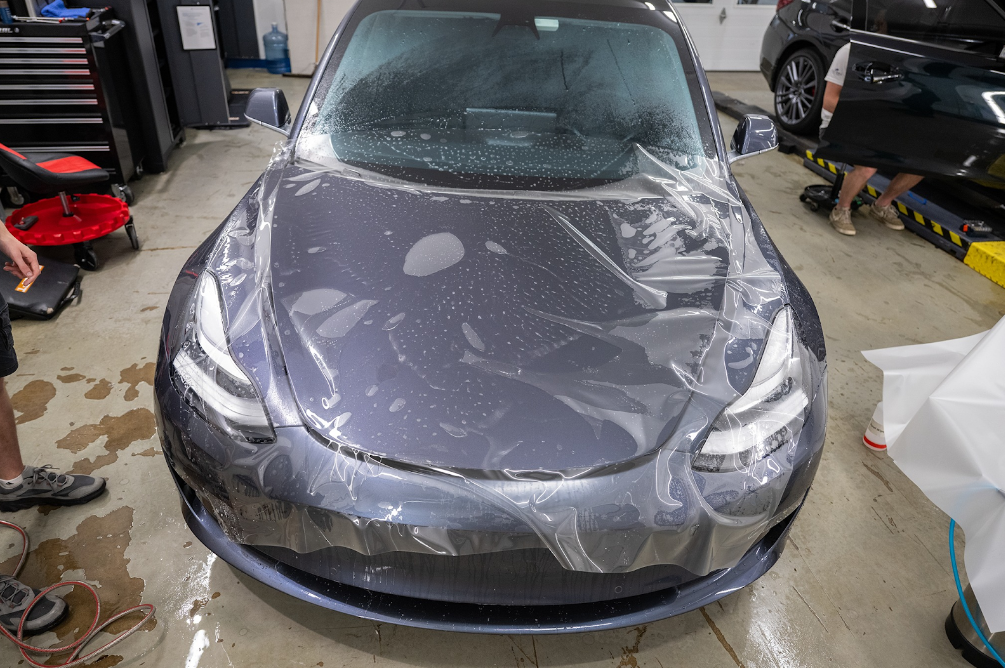[GALLERY] A 15-year-old AMG Mercedes, three detailers, and 36 hours.

The whirl of a dyno sends echos through the garage. The whine increases in intensity while the echo of a German-built 5.5 Liter V8 assaults the ears with a hell-raising roar that could drown out most rock concerts. It’s Alex’ Palmeri’s built 2003 Mercedes-Benz E55 AMG, and that dyno run was the subject of one of his recent videos that caught our attention about a month back.
The other thing that had us doing double takes was the car’s Obsidian Black paint finish. To him, he felt that the car’s appearance was top-notch. And, for the most part, we would agree. See, this E55 was unique because it was considered to be a bit of a unicorn to the purist W211 community. From the paint to this particular example’s options list, in which details such as this car’s factory installed “blue” tint were of mentionable importance, it had all the tell-tale features that would make this E55 a “future classic”. But, one thing really made this car a local hit: it is the leading role in a rapidly growing Youtube channel called “Legit Street Cars”.
For the past year, Alex’s E55 has been the subject of several of his experiments, which he has documented on this Youtube channel that had found a hot spot in car culture both local and nationwide. From various modifications to multiple pulls on the quarter mile, this 15-year old, 100,000 mile E55 AMG was also proving how German it was by being almost too stubborn to break down. And that’s the thing with the W211 E55 - it’s considered to be a tank.
Particularly, it’s the legendary m113 V8 engine that has won the hearts of car enthusiasts everywhere. It made its name in the W210 E55 for being known to outlive most of their owners when it came to reliability. And, had rust not gotten the better part of the total produced W210 bodied E55s, we’d be happy to mark it down among the most bulletproof high performance european sedans ever manufactured.
But, Mercedes’ AMG division decided that it was time for an upgrade. And, In 2003, AMG put a supercharger on that m113, (called a “kompressor”), and just like that, the m113”k” was born. But while we were impressed with the modifications and the durability of the engine, it wasn’t until we saw the sun streak across the paint finish of his E55 in the dyno video that we were all but won over on the looks of this car as well.
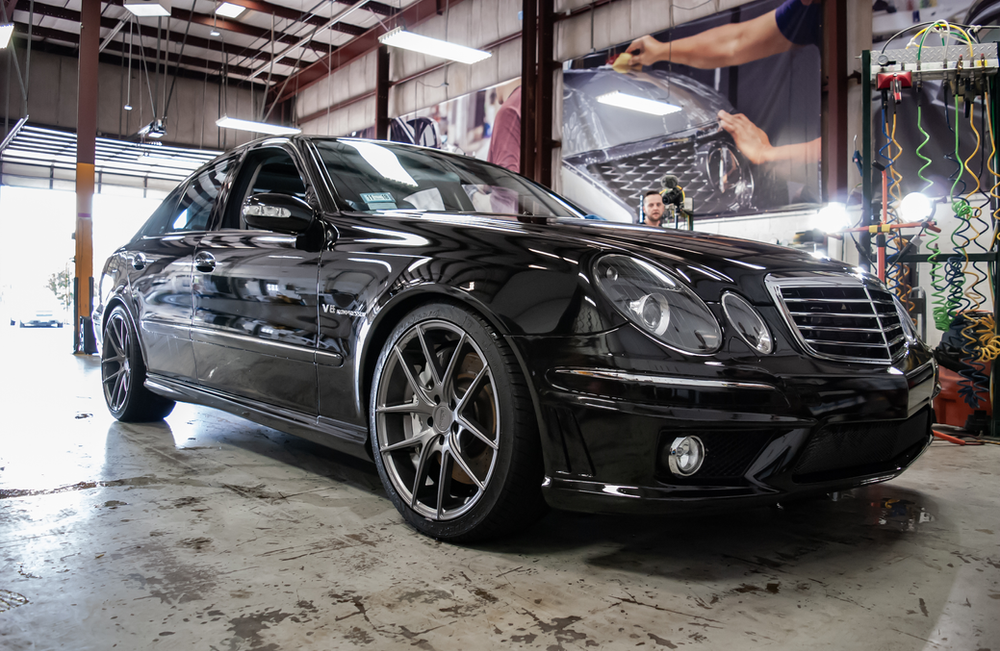
Swirl marks. Dents. Deep scratches - that was just the start of what would be a long list of issues with Alex’s prized E55’s paint finish. We knew just from the video that things probably wouldn’t get much better in person. And when your car is considered to be a bit of a local celebrity, it’s important that it looks just as good in person as it does on camera. So, without waiting another minute, our Marketing Manager was on the phone, and before long, we had the chance to see the E55 in person for the first time. Now, it’s safe to say that after 15 years, several owners, 100,000+ miles and a life of hard driving, any car’s finish would probably lose some luster. And, in true form, we don’t shy away from honesty when it comes to assessing our clients’ cars - this one had lost more than “some” of its luster.
From dents, to deep scratches, to even discovering that some panels of the car had been buffed and sanded poorly (and for some reason very aggressively), this E55 had a list of defects, some severe, that had proved that this car did not have a pampered life. We examined every single panel of the car closely, and with our investigation complete, we tailored a strategy and set to work on what would be a 30+ hour, 3+ crew project. We began, as we always do, with a thorough hand wash.
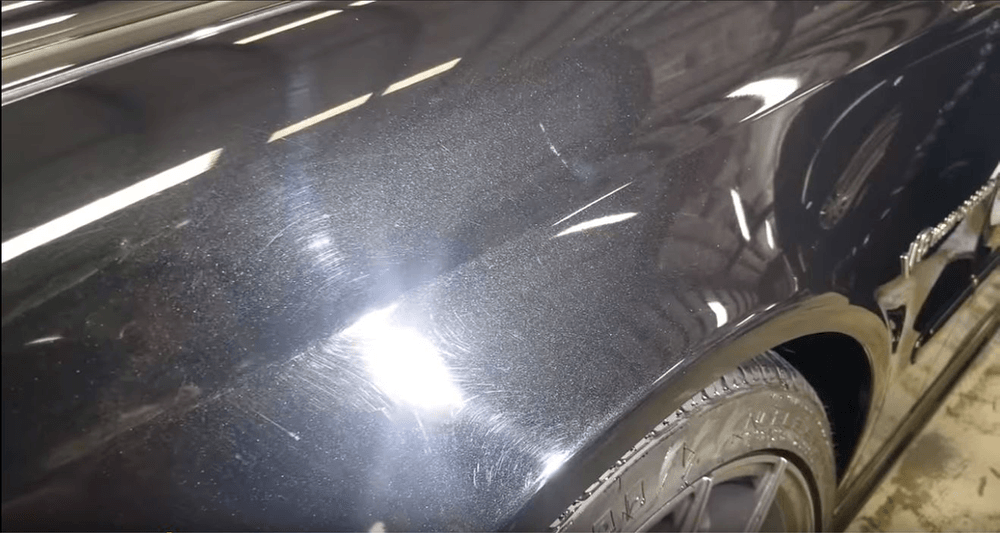
We had the team set to work by giving the E55 our two-bucket exterior wash and decontamination. We started by washing the wheels and rims first, but because Alex’s rims were only a year old and freshly powder-coated, cleaning the wheels was the smallest of the challenges we would face with his E55. Next, we hit the whole car with soap to prepare it for its initial wash. We say “initial”, because it’s not enough to just “wash” the car before a detail, and that’s due to above-surface contaminants - things like tar, bugs and even iron particles that can embed themselves into the clearcoat. We detected these imperfections with what we will simply call “The Plastic Bag Trick” - whereby you put your hand into a plastic bag and run it across the painted surfaces of your vehicle, thus exposing you to harsh paint contaminants that you would not otherwise see with the naked eye. The look on Alex’s face when he felt the aging paint finish on his dream car re-affirmed that in that dream, his perception of the paint finish was now more of a nightmarish aspect. But, luckily, we had the solution for the problem, in the form of something called “Iron-X” - a solution we spray onto the paint finish to loosen and absorb the iron defects.
After rinsing the Iron-X off with water, we then ran a clay bar over all of the car’s surfaces to ensure that all debris and contaminants were completely removed. After a thorough wash, the next challenge was to address the numerous dents that had accrued on just about every body panel over this car’s 15-year life span. Enter “Dennis” from “Dennis Does Dents” - our resident Paintless Dent Repair guy and man fit for the challenge of removing all of the blemishes that 15 years had put on the E55.
During this time, Dennis removed several dents from just about every panel on the E55, and during that process, we discovered why we saw visible wet sanding marks on some of the panels during our initial visual inspection. After using a digital micrometer to measure the paint thickness on these panels, we discovered that the finish was extremely thin, which meant that while the car might not have been repainted in these areas, there was the strong chance that a previous shop had wet sanded and buffed the factory paint to the point where doing a paint correction and polish would mean our crew would have to tread very lightly during the process.
This exercise of caution was because a big part of what makes a paint correction work is heat. Generate too much of it, and you risk burning through the finish of the vehicle and achieving what we call a “strikethrough” which is when the clearcoat is completely eliminated, exposing the paint underneath. With how thin the finish had become on Alex’s E55 in some areas, we knew it would be a challenge to avoid a strike through. But, some due diligence by our crew made the paint correction on the aged paint look easy.
We as detailers look at paint very differently than those who might not be familiar with the industry. As a result, even on brand new cars, a lot of the things we find will tend to go unnoticed to the untrained eye. The good news was that despite the overall condition of Alex’s car, most of the defects we found were actually very minor. The normal scratches and swirls we see are all surface defects that are taken care of with machine polishing. This was the next part of the process. For this step, we got started by using a Rupes lhr15 with a Lake Country microfiber pad and Carpros Clear Cut Compound to remove all the paint defects we could.
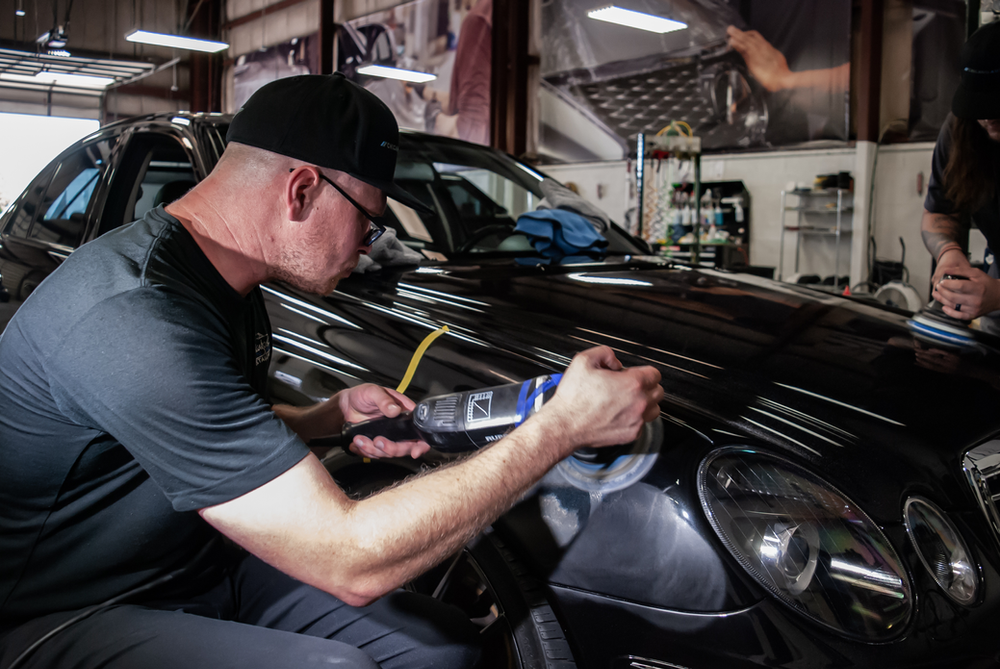
Day two came around, and our crew was back at it at 8:00am. We started the morning by tackling the interior of the vehicle. After a thorough clean inside, we returned to the exterior to continue polishing, making sure to get as many of the defects out as possible. When we felt satisfied with our progress, we sprayed down the car with alcohol to remove all of the compounding chemicals and other solutions that would hide small imperfections, and went back to address any missed spots as needed. At this point, we were ready to polish the finish and prepare the E55 for a ceramic coating.
To do this we used Modesta’s Finishing Primer Polish, applied to a foam finishing pad. This step works to further refine the finish, and to ensure that it would be ready for the ceramic coating process. Because paint correction is a very slow and labor-intensive process, we always make it a priority to ensure that we achieve an honest finish. Other detailers will take several short cuts, and use products with fillers that cover up defects rather than fix them to give the impression of a flawless paint correction, but will easily wash away and reveal those hidden defects after just a couple wash cycles. We don’t take shortcuts, and the 20+ hours that it took to fully correct the paint on Alex’s E55 shows just how important it is to be thorough and accurate during the correction process. With the finish as close to perfect as possible, we brought the E55 in to our coating room to begin the ceramic coating process.
If you aren’t sure what a ceramic coating is, you’re in luck. Click HERE to view the in-depth video that goes into what it is and how it works. The short version, is that a ceramic coating is like a wax but thicker and more durable. This means that it is a glossy, chemical resistant, very hydrophobic coating that will last years instead of months like traditional waxes and paint sealants.
We chose to put modesta BC04 on this vehicle because it is black, a color that is known to be one of the most difficult to maintain, in part because black shows swirl marks and scratches very easily. This coating is a very hard durable added layer that will help reduce the amount of car wash-induced scratches. We also sprayed the wheels with Modesta BC06 high-temperature coating. Their BC06 formula is designed to withstand the hot temperatures of the brake system and rims, making it much easier to clean off built-up brake dust.
Alex’s E55 may not have had an easy life, but one thing we all came to respect about this particular example was that while its paint finish might not have been properly cared for, this E55 was driven the way it was intended to be driven. The best part about this AMG, however, was that after two days and more than 30 combined hours of labor, it looked better than the day it rolled off the lot.
After two days of hard work, we pulled Alex’s E55 out into the sun for the first time since we took it into our shop, which revealed the results of what 30+ hours of work can do to revitalize the finish of an Obsidian Black, 15-year-old 100,000 mile Mercedes AMG. We always put our best foot forward when we work on any car, whether it’s 15 years old or 15 minutes fresh off the dealer lot. This was also a great exercise that we saw as a way to show the true effects of the products that we use on all of our clients’ cars. This experience proved that even aged and abused paint finishes can be brought back to better-than-new with a little work, a lot of elbow grease, and plenty of patience.
Go check out our video on Youtube HERE to see in depth how we got the E55 to shine better than new. Also, check out Alex’s channel by clicking HERE to see the E55 in action. Thanks for reading, and we’ll see you in the next blog!
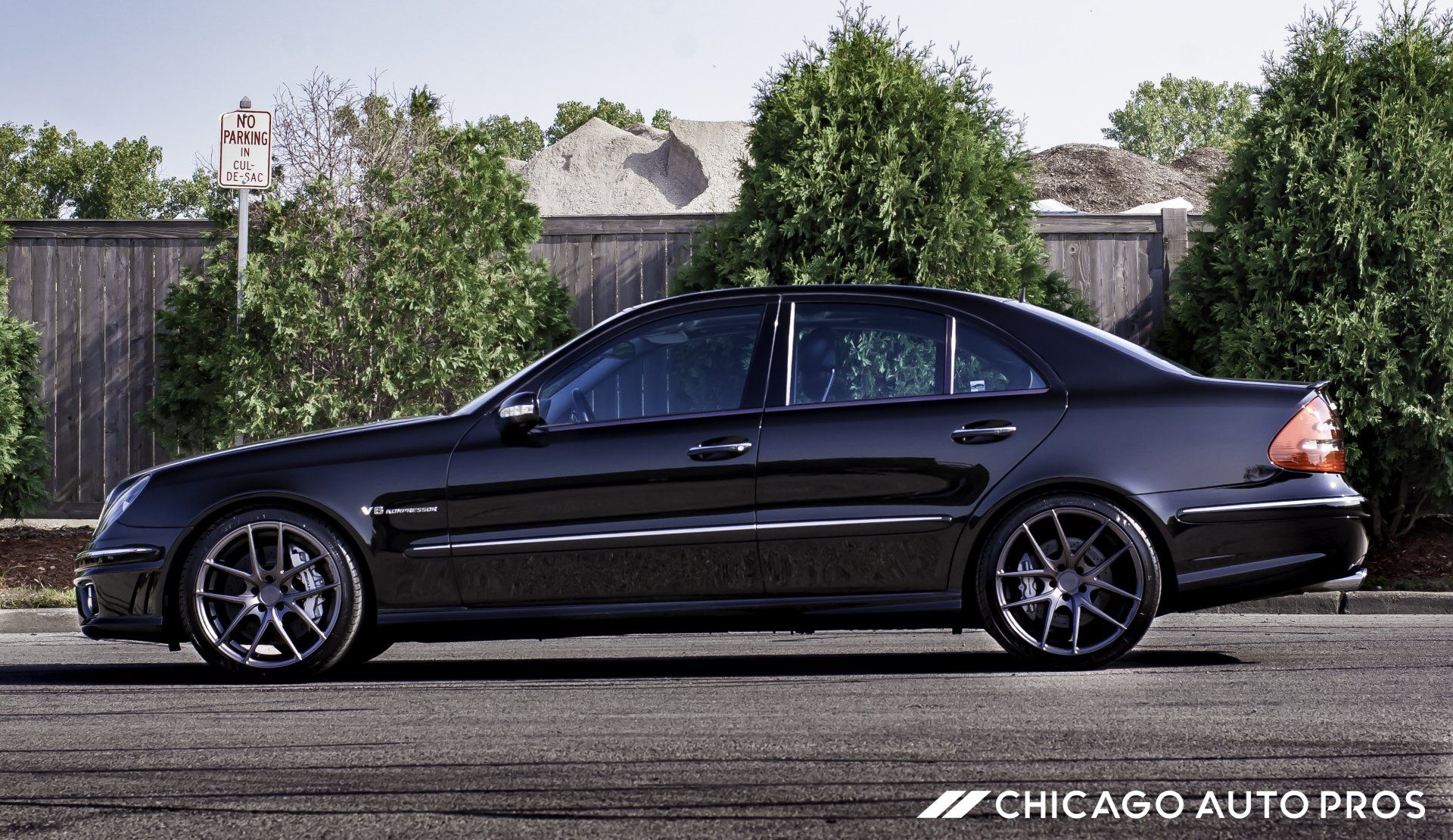
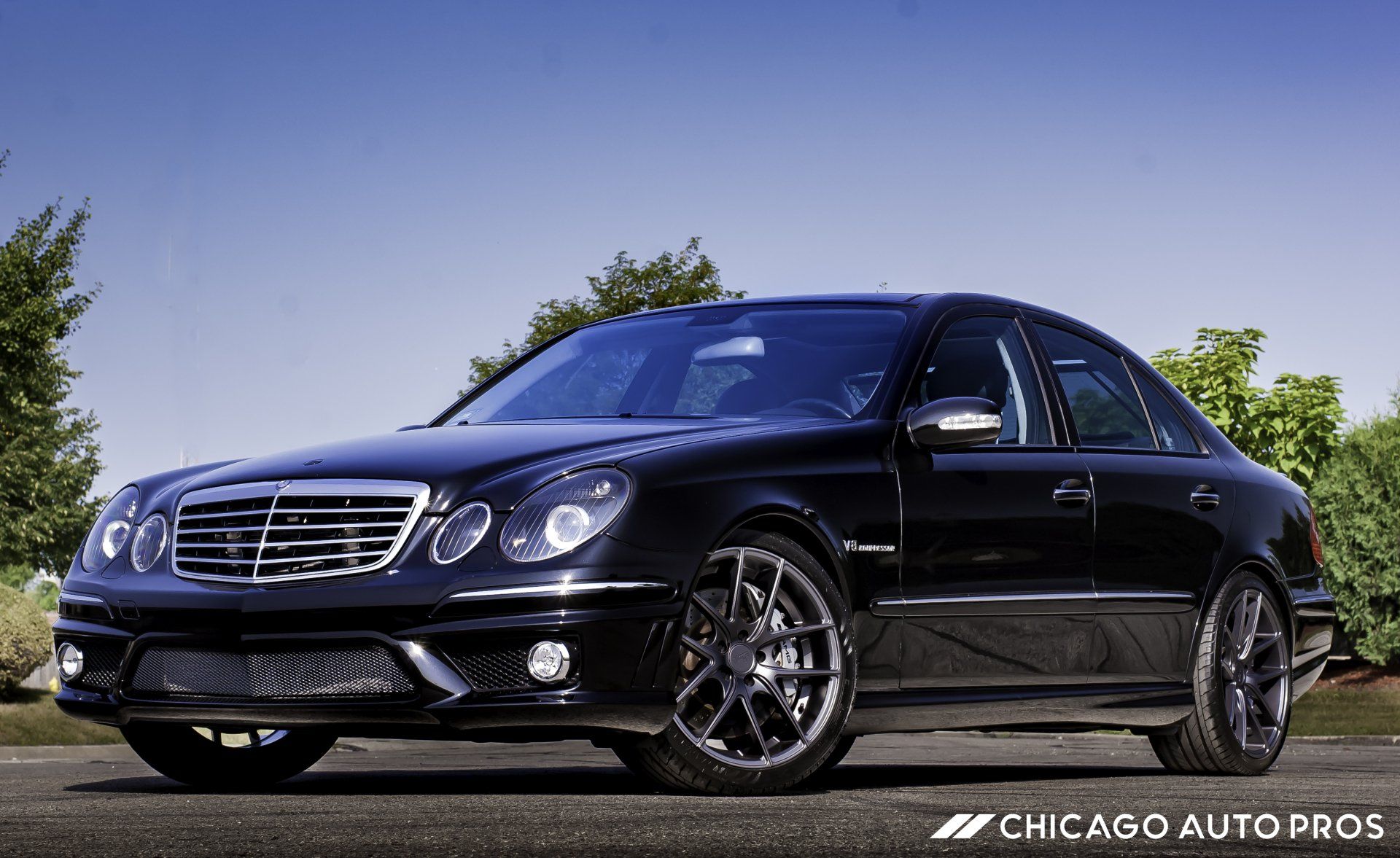
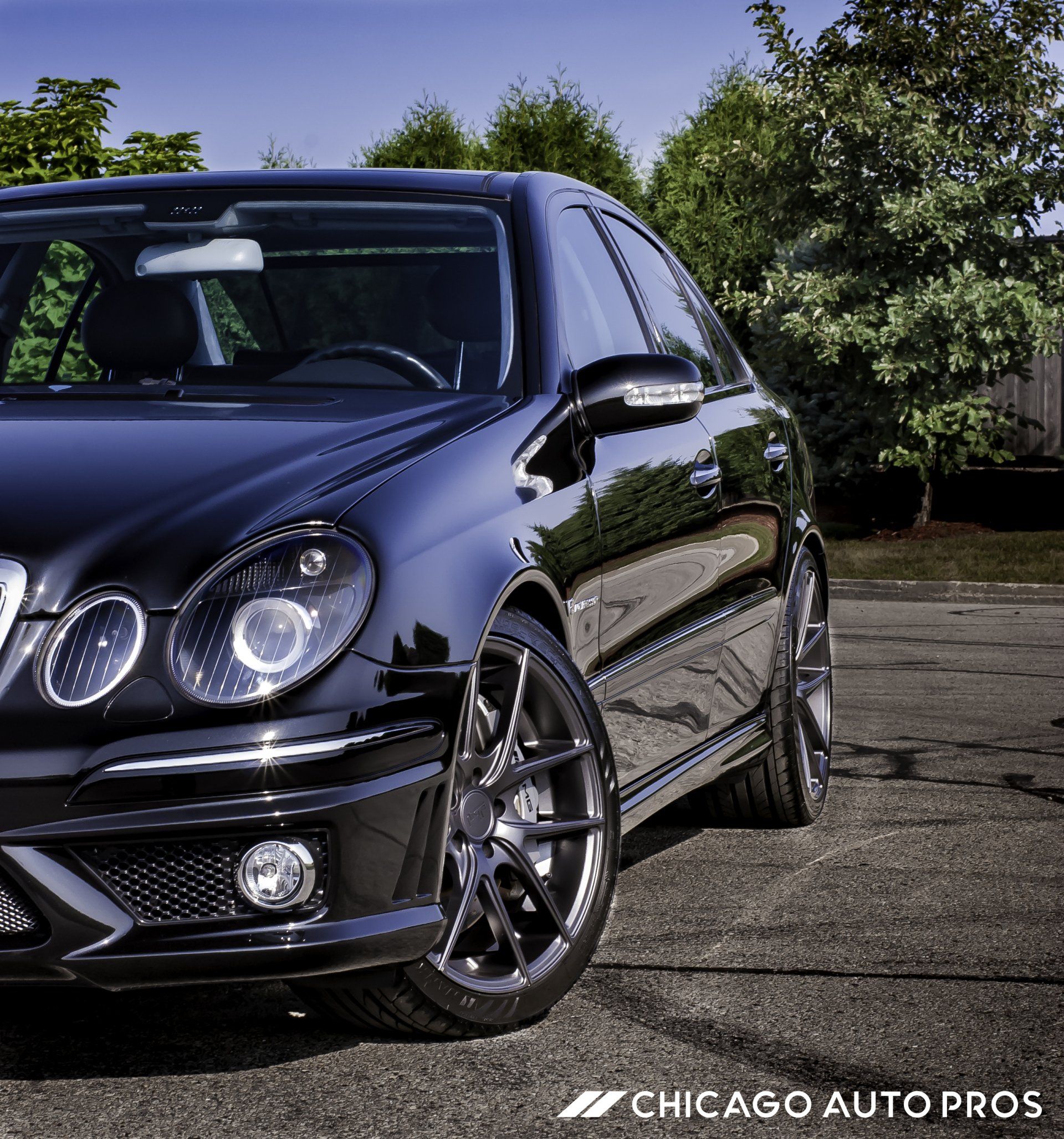
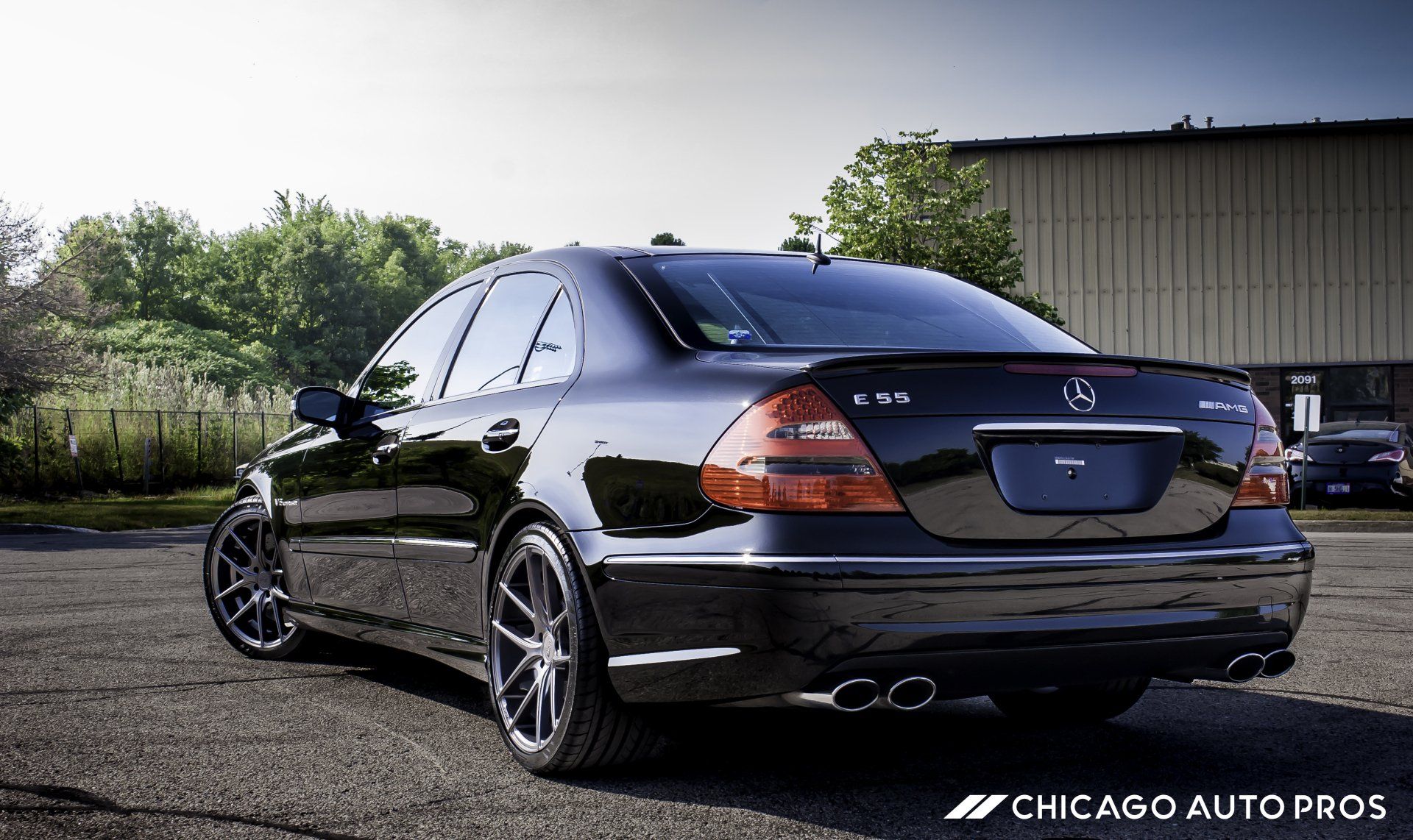
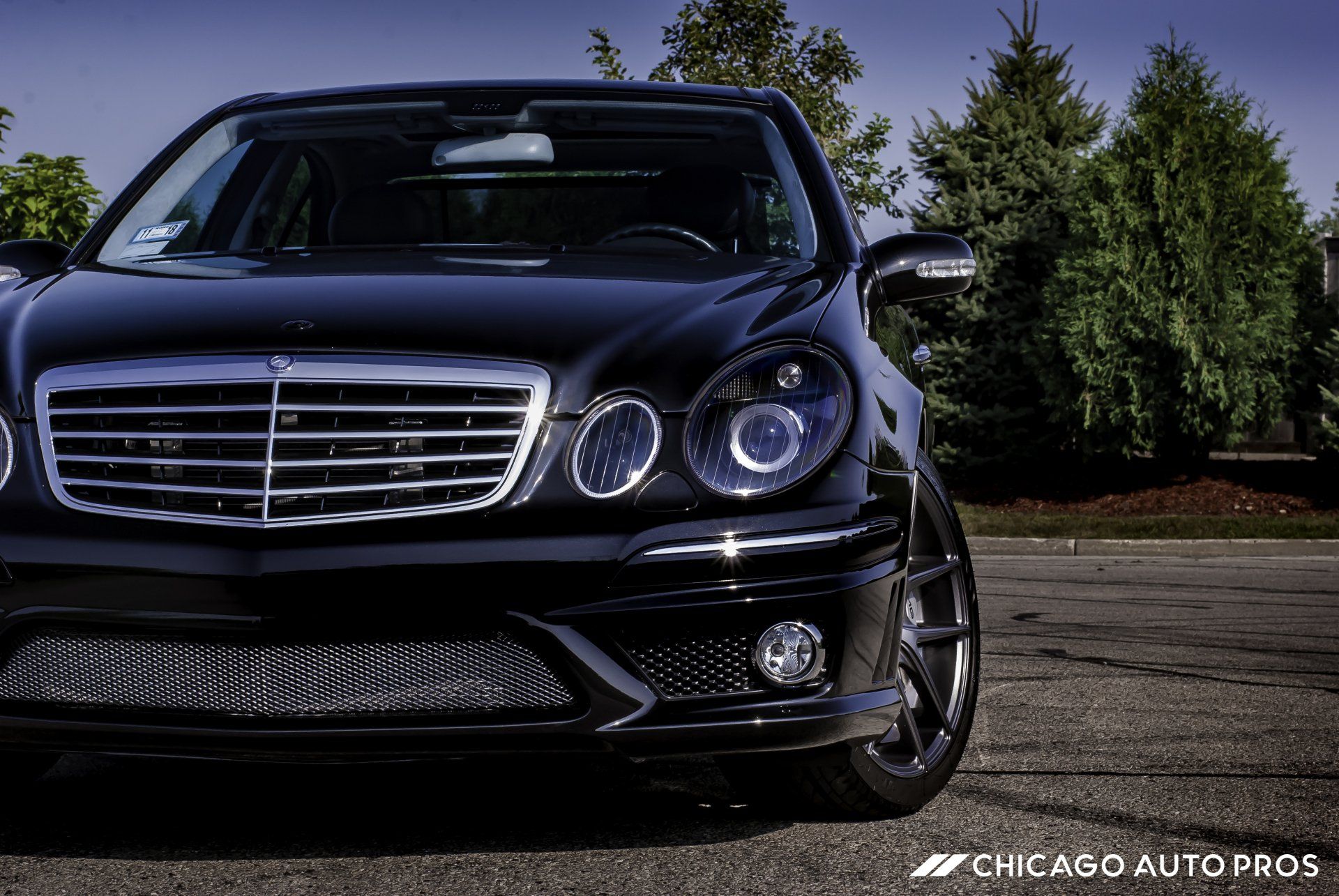

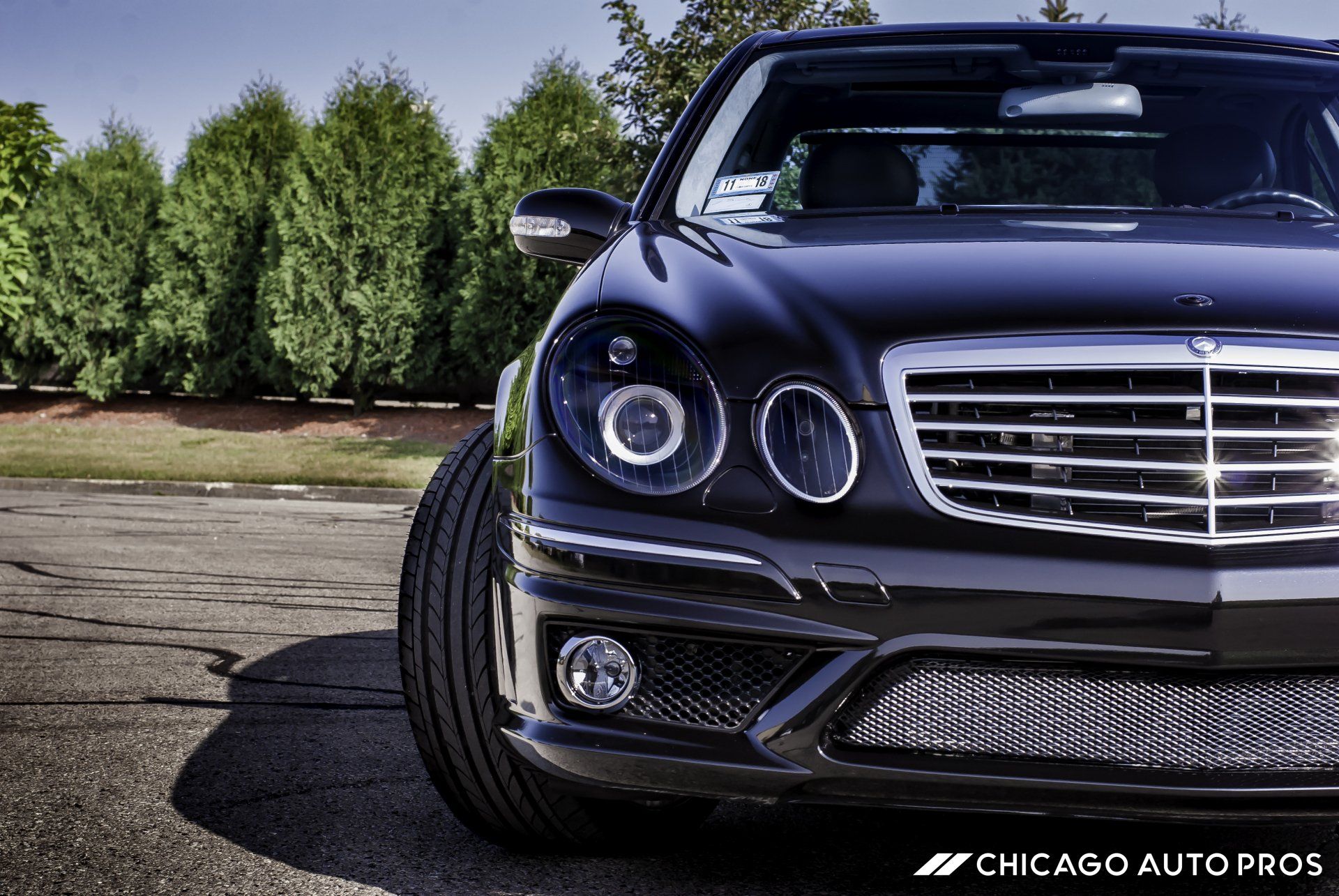
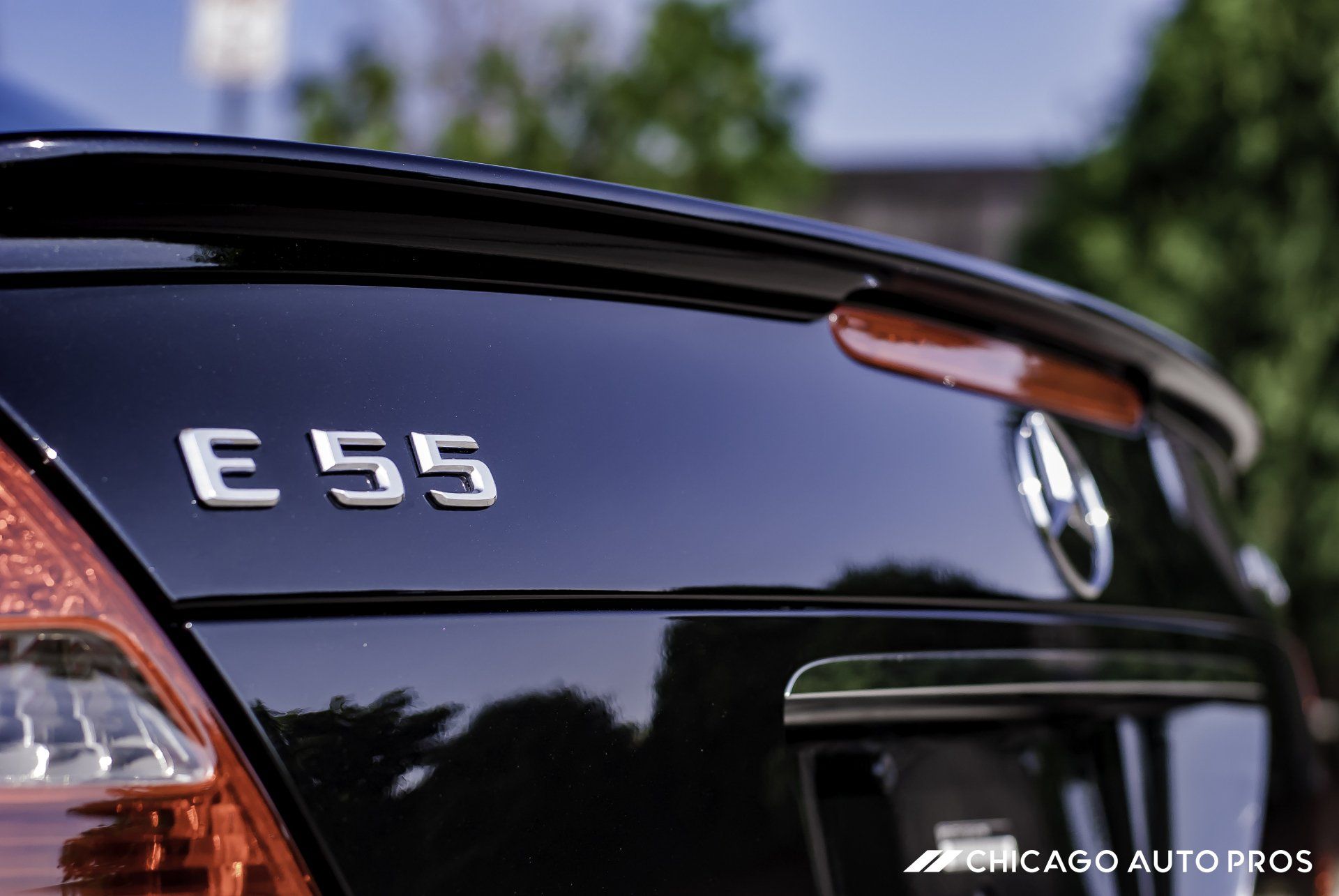

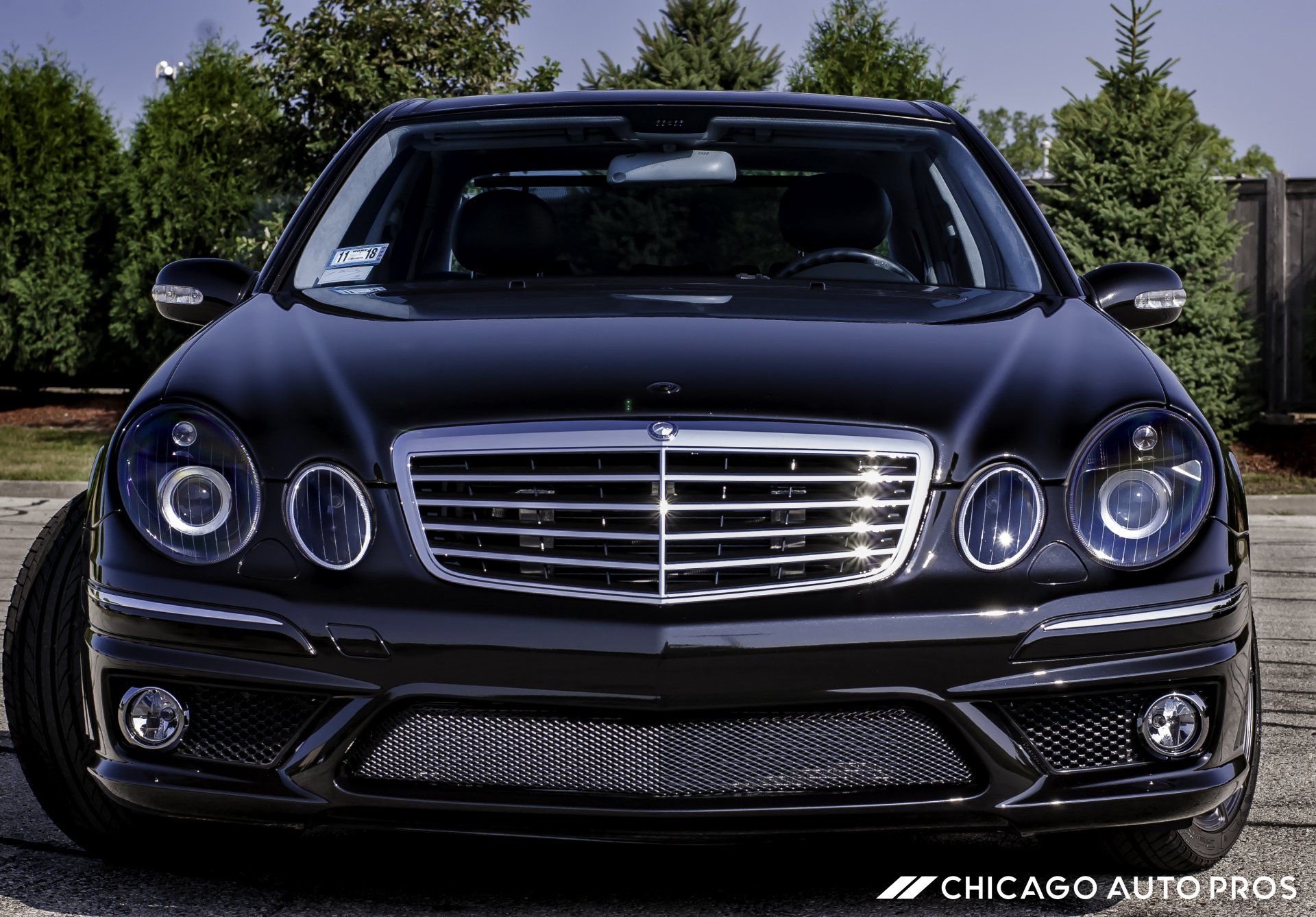

We Make Your Car Look Beautiful
Founded with an unquenchable desire for automotive perfection, Chicago Auto Pros is a leader in paint protection efforts and aesthetic vehicle detailing services in Chicago, Illinois. When you bring your automobile to our Chicago-based detailing shop, you are sure to experience unmatched integrity, customer service excellence, and above all, absolute automotive perfection from the inside out. Choose the right auto detailing team - choose Chicago Auto Pros!
Lombard Location
207a Eisenhower Ln S, Lombard, IL, United States
Glenview Location
2075 Johns Ct, Glenview, IL, 60025, United States
Additional Service Areas
Tesla & EV Detail Specialists
Services Offered
Quick Links
All Rights Reserved | Chicago Auto Pros



